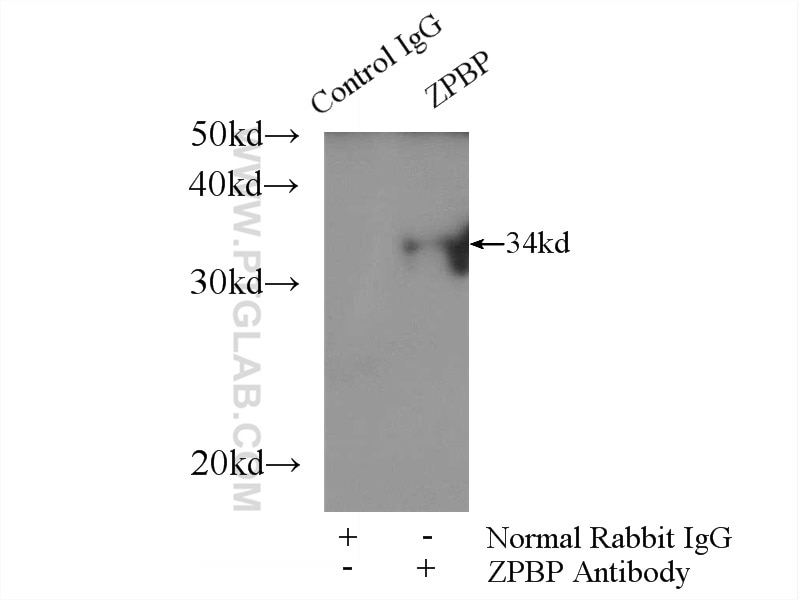Anticorps Polyclonal de lapin anti-ZPBP
ZPBP Polyclonal Antibody for IP, ELISA
Hôte / Isotype
Lapin / IgG
Réactivité testée
Humain, rat, souris
Applications
IP, ELISA
Conjugaison
Non conjugué
N° de cat : 15835-1-AP
Synonymes
Galerie de données de validation
Applications testées
| Résultats positifs en IP | tissu testiculaire de souris |
Dilution recommandée
| Application | Dilution |
|---|---|
| Immunoprécipitation (IP) | IP : 0.5-4.0 ug for 1.0-3.0 mg of total protein lysate |
| It is recommended that this reagent should be titrated in each testing system to obtain optimal results. | |
| Sample-dependent, check data in validation data gallery | |
Informations sur le produit
15835-1-AP cible ZPBP dans les applications de IP, ELISA et montre une réactivité avec des échantillons Humain, rat, souris
| Réactivité | Humain, rat, souris |
| Hôte / Isotype | Lapin / IgG |
| Clonalité | Polyclonal |
| Type | Anticorps |
| Immunogène | ZPBP Protéine recombinante Ag8585 |
| Nom complet | zona pellucida binding protein |
| Masse moléculaire calculée | 351 aa, 40 kDa |
| Poids moléculaire observé | 34 kDa |
| Numéro d’acquisition GenBank | BC005223 |
| Symbole du gène | ZPBP |
| Identification du gène (NCBI) | 11055 |
| Conjugaison | Non conjugué |
| Forme | Liquide |
| Méthode de purification | Purification par affinité contre l'antigène |
| Tampon de stockage | PBS with 0.02% sodium azide and 50% glycerol |
| Conditions de stockage | Stocker à -20°C. Stable pendant un an après l'expédition. L'aliquotage n'est pas nécessaire pour le stockage à -20oC Les 20ul contiennent 0,1% de BSA. |
Informations générales
ZPBP (also known as ZPBP1), named for its binding to the oocyte zona pellucida, is a spermatid and spermatozoon protein that localizes to the acrosome. ZPBP may be implicated in gamete interaction during fertilization. It has been reported that absence of ZPBP1 prevents acrosome compaction and leads to acrosome fragmentation and sterility in male mice. (PMID: 17664285; 19204925)
Protocole
| Product Specific Protocols | |
|---|---|
| IP protocol for ZPBP antibody 15835-1-AP | Download protocol |
| Standard Protocols | |
|---|---|
| Click here to view our Standard Protocols |


